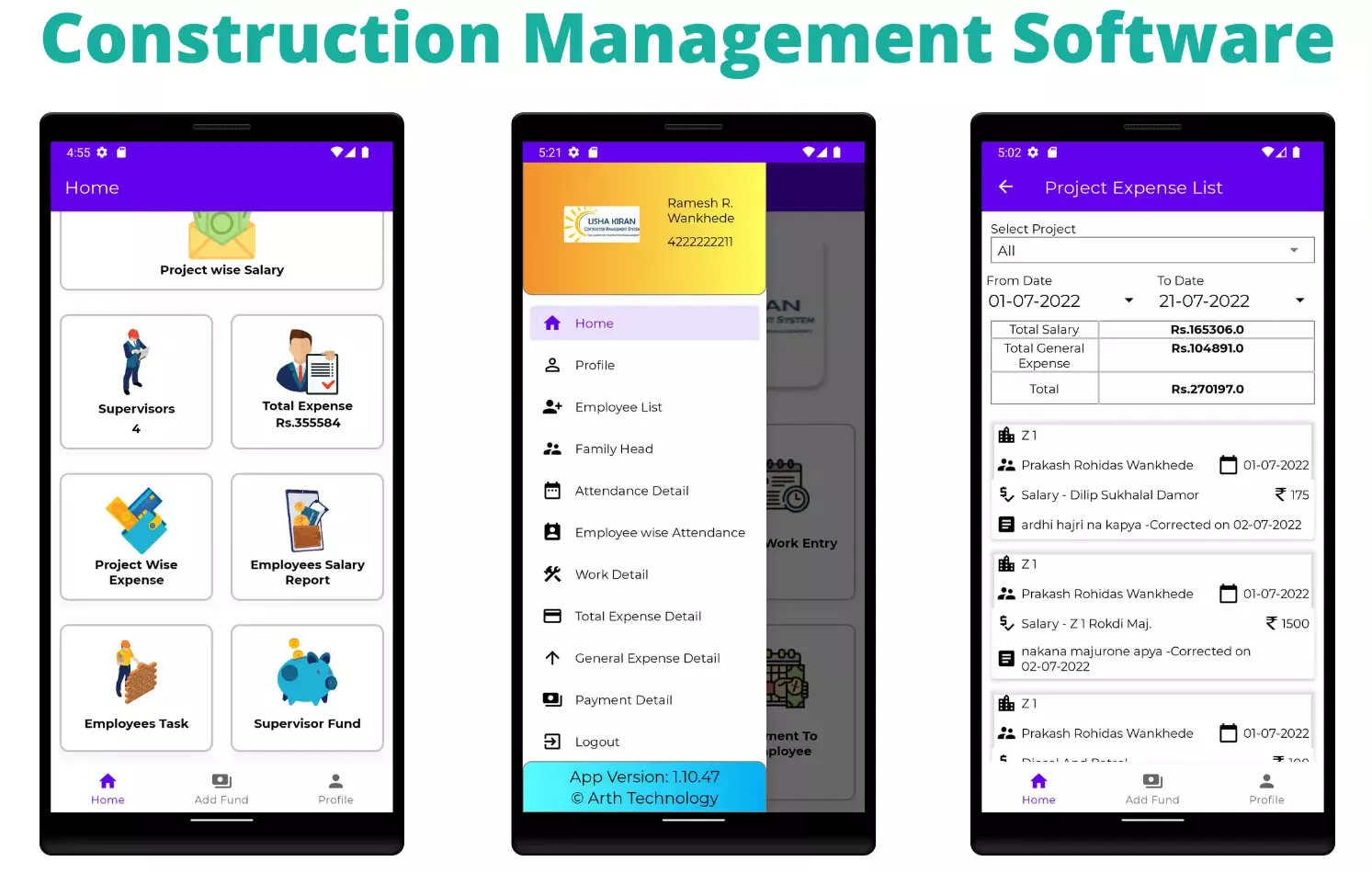Advanced Construction Management Software for Streamlined Projects
Advanced Construction Management Software for Streamlined Projects
Blog Article
Tailored Building Management Software Program: Optimizing Source Allotment and Budgeting Strategies
These advanced tools provide a nuanced technique to optimizing resource allotment and budgeting strategies, essential components for effective task execution. By delving into the complexities of just how such software application can improve resource allotment techniques and refine spending plan optimization techniques, a clear path towards increased job effectiveness emerges.
Advantages of Tailored Software Application Solutions
Tailored software application services use a myriad of benefits to building monitoring companies looking for to boost effectiveness and enhance procedures. By customizing software program remedies to resolve project monitoring, scheduling, budgeting, and source appropriation, companies can enhance their operations and achieve better productivity.
Another advantage of tailored software program services is the ability to provide real-time insights and analytics. Building and construction administration firms can utilize data-driven decision-making to check project development, determine bottlenecks, and make changes promptly. This proactive strategy improves task end results and helps firms remain on track with timelines and budgets.

Boosted Resource Allowance Techniques
Implementing effective resource appropriation approaches is critical for construction monitoring companies to optimize project outcomes and make the most of performance. Boosted source allocation approaches entail tactically assigning personnel, equipment, and materials to certain tasks to guarantee optimum usage of resources. One crucial facet of enhanced source allotment is the capability to properly anticipate task demands and assign resources appropriately. By leveraging construction administration software program that uses real-time tracking and reporting attributes, companies can dynamically adjust allotments as job requires advance, leading to improved effectiveness and cost-effectiveness.
In addition, boosted resource allotment methods make it possible for building and construction firms to recognize and deal with possible bottlenecks or resource restrictions proactively. By conducting routine assessments of resource application and efficiency metrics, supervisors can make data-driven decisions to redistribute resources effectively and protect against delays. This positive method not only boosts project timelines yet additionally reduces the risk of budget plan overruns because of inefficient resource appropriation.
Spending Plan Optimization Methods
To accomplish ideal economic efficiency in construction projects, efficient budget plan optimization techniques play a pivotal role in ensuring price control and task success. One crucial method is the facility of a detailed task budget that designates resources based on priority and vital needs. By clearly defining the range of work, setting practical price quotes, and continually surveillance costs, building supervisors can determine possible expense overruns at an early stage and take rehabilitative actions. Additionally, executing value design practices can assist simplify job expenses without jeopardizing top quality. This includes examining each task component to identify chances for cost financial savings while maintaining efficiency requirements. In addition, leveraging historic data and sector benchmarks makes it possible for construction supervisors to make informed decisions concerning budget plan allowances and identify locations where costs can be optimized. By incorporating these budget plan optimization strategies into building and construction management software, task stakeholders can improve financial planning, source allocation, and total spending plan monitoring to drive project success and success.

Effect On Job Efficiency
Maximizing construction management software can substantially enhance task performance by enhancing communication, enhancing cooperation, and helping with data-driven decision-making. Furthermore, building administration software application can provide beneficial insights through data analytics, permitting task managers to make informed decisions rapidly and precisely.
Furthermore, the automation of routine jobs such as scheduling, spending plan monitoring, and source allocation can free up valuable time for job groups to concentrate on essential activities, inevitably speeding up job delivery. The capacity to monitor job progress in real-time and identify possible bottlenecks allows aggressive analytic, protecting against issues from escalating and causing hold-ups. In general, the influence of tailored construction administration software program on task effectiveness is undeniable, supplying a competitive benefit by maximizing workflows and taking full advantage of productivity.
Future Trends in Building Software Application
As the construction industry continues to progress, developments in modern technology are forming the future landscape of building and construction software solutions. One substantial trend imminent is the enhancing combination of artificial intelligence (AI) and artificial intelligence abilities in construction software. These modern technologies have the potential to transform just how building tasks are managed address by making it possible for predictive analytics, automated decision-making procedures, and boosted job understandings.
An additional future trend in building software is visit this website the expanding focus on cloud-based remedies. Cloud modern technology uses raised flexibility, scalability, and ease of access for building teams, enabling for real-time collaboration and information sharing across task stakeholders. This change towards cloud-based software program is expected to improve job effectiveness, enhance communication, and improve total project outcomes.
Moreover, the rise of Structure Details Modeling (BIM) is expected to continue forming the building software application landscape. BIM software assists in 3D modeling, visualization, and data administration, causing improved project sychronisation, decreased errors, and enhanced job outcomes. Embracing these future fads in building software will certainly be vital for business looking to remain affordable and drive advancement in the sector.
Final Thought
Finally, tailored construction management software application supplies various benefits such as enhanced resource allotment methods and budget optimization techniques. This software program has a substantial influence on job performance by enhancing processes and improving total performance (construction mangement software). As modern technology remains to advancement, future patterns in building software are expected to more optimize resource allocation and budgeting why not find out more methods for construction tasks
Report this page